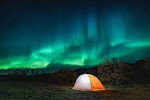Travel Bucket List: Discover the historic state of Baden-Württemberg
Beautiful landscape,
majestic Alps, densely-wooded hills, historical towns with artistically
restored buildings, old imperial cities, ancient fortresses and medieval architecture. Everything a travel buff dreams to explore in a
foreign country is provided with the state of Baden-Württemberg. With its
numerous castles still stood imposing on
rugged hills, rich cultural heritage and historic districts, traveling to Baden-Württemberg
is almost like a fantasy. It offers an interesting peek to Germany’s glorious
imperialism days. So whether you are an adventure junkie, a culture bum or just
love the city life, Baden-Württemberg has so much to offer.
Why Choose Baden-Württemberg of all German states?
It offers a striking
balance between an urban living and a country life escape, its topography
provides a contrasting effect on the new world and hinterland wonders. With its
land area of more than 35,000 square kilometers the state is immensely wide to
cover all the amusement, diversions and thrill anticipated by travelers.
Historic State!
Historically,
Baden and Württemberg formed parts of the Holy Roman Empire in the middle ages.
In 1806 after the defeat of the last Holy Roman Emperor, Francis II, the father
of Queen Marie Antoinette of France,
Napoleon Bonaparte abolished the empire, he then elevated Baden into a status
of a grand duchy and Württemberg into a kingdom.
When Germany was defeated in World War I, all German princely states, grand duchies and tiny kingdoms, including Württemberg and Bavaria, were dissolved. Eventually, Baden and Württemberg joined the Federal Republic of Germany and In 1951, after the merging of the states of South Baden, Württemberg-Baden and Württemberg-Hohenzollern, the state of Baden-Württemberg was formally created.
When Germany was defeated in World War I, all German princely states, grand duchies and tiny kingdoms, including Württemberg and Bavaria, were dissolved. Eventually, Baden and Württemberg joined the Federal Republic of Germany and In 1951, after the merging of the states of South Baden, Württemberg-Baden and Württemberg-Hohenzollern, the state of Baden-Württemberg was formally created.
Today,
Baden-Württemberg is one of the wealthiest states in Germany and boasts an
economic powerhouse status that partly flows from its flourishing automobile
industry. Located in the southwest and east of the Upper Rhine, bordering
France and Switzerland through Lake
Constance, the state straddles on the bank of the Neckar River cuddled by Alps
and Rhine Valley.
Baden-Württemberg is known as the “Nine Stars
of the Southwestern Germany” due to its thriving economy, cultural attractions,
classical architecture, royal fortresses, scenic beauty of nature, festivals and shopping
centers. It became one of the most visited states in Germany attracting more
than 300,000 tourists annually. Its major draw remains to be the Black Forest
and ancient royal fortresses. The state is divided into 35 districts and nine
cities. Stuttgart is the capital.
BEST
DESTINATIONS IN BADEN-WÜRTTEMBERG
FOR
ADVENTURE JUNKIE AND CULTURE FANATIC
PART I: EXPLORE ULM!
Ulm
is an urban district along the Tübingen region of Baden-Württemberg. It runs
through Danube river, the longest river in Europe. It is an important
cultural and economic hub of the Upper Württemberg. A classical German city
that typically embodies the Swabian characteristic, it boasts medieval architecture, historic old
quarters and local German cuisine that suits everyone’s palates.
Ulm
is famous for two things: Being home to the tallest church steeple in the
world, Ulm Minster, and as the birthplace of Physicist, Albert Einstein where a
bizarre-looking fountain, with his tongue stuck out naughtily, was erected in
1984 in his memory. Einstein was born in Ulm in 1879 but in 1880 his family
moved to Munich where his father established an electrical equipment company.
Einstein spent most of his teenage years in Munich. He renounced his German citizenship
in 1896 to avoid a compulsory military service.
Top Things To Do in Ulm
Recommended by Travel Guide Experts
1. View the Majestic
Steeple of Ulm Minster
This
is Germany’s largest Gothic church after Cologne cathedral and features a spire
touted as the tallest in the world rising 162 meters high. With its imposing
tower, the Minster dominates the skyline of Ulm and provides a panoramic view
of the city. It has 768 steps. Contrary to many belief, Ulm Minster is not a
cathedral as it has never been the seat of an archbishop. Formerly a Roman
Catholic church, Minster is now a Protestant church since Ulm converted to
Lutheran in the 16th century. Address: Münsterplatz 1, 89073 Ulm. Opening hours: 9:00am to 5:45pm. Admission fee: €4.00.
2. Take a
walk around the old and historic quarter of Fishermen’s and Tanner
Stepping back in time to a quiet picturesque village where medieval
timbered houses and classic food destinations still thrived. This cozy old town
is located on the mouth of the River Blau. Its main attraction is the Leaning
House, a 14th century timber framed home which leans over the river
and chocked by ancient beams.
It has numerous bridges and restaurants and
the atmosphere is cool according to travelers who already visited this place. Fishermen’s and Tanner Quarter is best to be
explored by foot to enjoy the relaxing ambiance and see the beauty of the old
town. Address: Schworhausgass 6,89073 Ulm. Admission is free.
For food lovers who
want to sample the sumptuous local cuisine, Ulm has a wide array of must-try
restaurants and bistros which offer gratifying meals that suit everyone's palates.
· Zur Forelle Restaurant - For
local cuisine, travel guide experts recommend Zur Forelle located in the heart of the beautiful district
of Fishermen’s and Tanner quarter. It has flares of hearty German cuisine and a
good start to experience an authentic Baden-Württemberg food indulgences. Address:
Fischergasse 25, 89073 Ulm,
Germany Phone:+49 731 63924
Opens Monday to Sunday 11am to 3pm, 5pm to midnight.
·
Hemperium – Restaurant and bar. It serves various meals made from male hemp
plant. Food is generally good according to travel guide experts. Address: Zinglerstraße
1, phone: +49 731 30200.
·
Kornhäusle – A cozy restaurant that specializes in crepes and pancakes.
Address: Kornhausgasse 8, phone: +49 731 1517311.
·
Choclet – A
café style meal with hot and cold drinks menu. Choclet has a beautiful terrace
where diners have an option to occupy the outdoor to get a perfect view of the
Danube river. Address: Herdbruckerstraße 14, Ulm, phone: +49 731 9608213.
·
Tagblatt – If you are looking for good salad meals. Tagblatt is situated
near the Danube river and open until midnight. Address: Insel 1, Neu-Ulm,
phone: +49 731 74678.
5. Stroll around the Town Halls (Rathaus) and see its
red brick walls
The 15th century
town halls were built around Danube river as a defensive fortress against
invaders. The town halls were in red brick and can be best explored by foot. It
is just around the old quarter of the Fishermen and Tanners and Ulm Minster.
Cafes and restaurants lined up in nearby areas. Admission is free.
6. Snap memories at the Einstein Fountain
Take a walk in Zeughaus where an amusing
bizarre-looking sculpture of Albert Einstein (where his tongue stuck out
naughtily) can be found. This serves as a memorial to the world-famous Theoretical Physicist.
Einstein was born in Ulm on March 14, 1879 but he grew up in Munich when his
family moved there in 1880. His father founded a company that sold electrical
equipment. In 1894, he closed his company and moved with his family in Italy.
Einstein followed in December that year but was sent to Switzerland to continue
his education. Einstein renounced his German citizenship in 1896 to avoid
serving in the military.
However, despite
renouncing his German citizenship, Einstein was honored and remembered in his
birth place in Ulm. A cast bronze sculpture was erected in his memory on the
grounds of the historical arsenal, in front of the 16th century
Zeughaus. It was created by Jürgen Goertz. The sculpture consists of three
elements: the rocket body that represents technology, a large snail’s shell
sits on the rostrum to represent nature, wisdom and skepticism towards man
controlling technology. Einstein’s head and his tongue emerge from the snail’s
shell. Location: Zeughaus, Ulm. Admission is free.
5. Visit the Bread Museum - If you
love bread and want to discover and, perhaps, learn from its history and
foundation, The German Bread Museum offers an interesting overview into the
history of bread and baking. It has an exhibit of growing grains and harvesting
of crops, the bread’s impact on culture and its social implications. The museum
has a wide collection of bread by themes. Address:
Salzstadelgasse 10, 89073 Ulm. A museum pass can be bought by €12 and
valid for 12 months. This pass will allow travelers to visit Weishaupt Gallery,
Ulm Museum, Museum of Bread Culture, Danube Swabian Museum, Edwin Scharff
Museum, Museum at Wiblingen Monastery and Rococco library, Natural History
Education Centre, and Childrens Museum Neu-Ulm.
6. Wander around the Oath House
Rising above the old town center of Ulm is the Oath House which
stood on what could have been the old King’s Palace. It is one of the most
important buildings in Ulm and has an interesting tradition of “Oath Monday”
every first Monday of July where the Lord’s Mayor gives his account of the
previous year’s events. This year, Oath Monday falls on the 20th of
July, 2015. The day will also be marked with special celebrations. Nearby
attractions include Christopher Fountain and history museum. Address: Schworhaus, Weinhof 12,
89073 Ulm. Admission fee: Free
7. Escape to nature and visit Botanical Garden and Arboretum
Maintained by the University of Ulm, this botanical garden
spreads on 28 hectares of land, it has green houses, beautiful gardens, pond,
cottage garden and meadows. It is
located in Hans-Krebs-Weg, Ulm and open to public on weekdays. Admission is free
ESSENTIAL GUIDE:
How to Get to Ulm?
1. By Train
The railway station is located within the town
center near Ulm Minster. Ulm is closer to Baden-Wurttemberg’s capital,
Stuttgart, just an hour ride, than to Munich, which is almost 2 hours travel
according to online sources. Special train tickets called Lander-Tickets can be
bought when you are traveling around Baden-Wurttemberg and Bavaria. Rates: €22 for
one person and €38 for five persons.
2. By
Plane
Take ICE
or IC train to get to Ulm if you are coming from any of the following airports:
a. Stuttgart Airport – Only 90 km
from Ulm and about one hour travel by train.
b. Munich International Airport –
150 km from Ulm or about two to three hours by train. The airport has an S-Bahn
station that connects to other Munich train stations.
c. Friedrichshafen Airport – also
known as Bodensee Airport, about two hours ride by train.
3. By Car
Ulm is near the intersection of
the A7 and A8 autobahns.
Getting Around in Ulm
There are buses around Ulm and
sightseeing boats on the River Danube. The town center and the historic Old
Quarter can be best explored by foot.
Where to Stay?
- Hotel Schiefes Haus - One of the most recommended hotels in Ulm, elegant hotel and a little expensive. Address: Schwörhausgasse 6, Ulm. Phone: 49 731 96793-0
- Münster Hotel - Located just within Ulm Minster. Address: Münsterplatz 14. Phone: +49 731 64162






















0 Comments